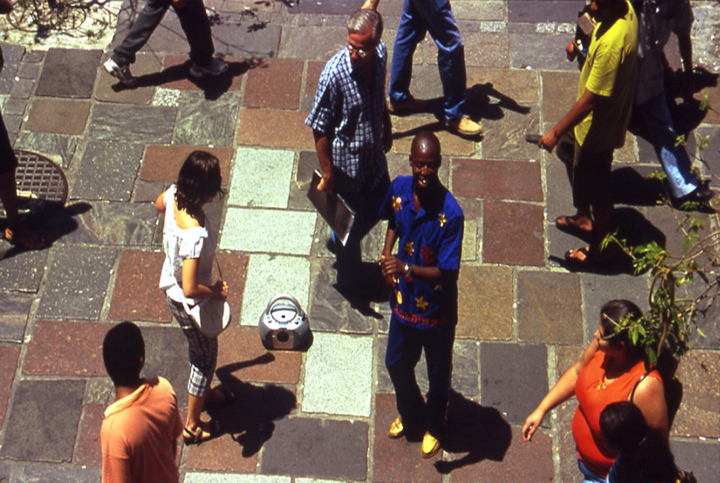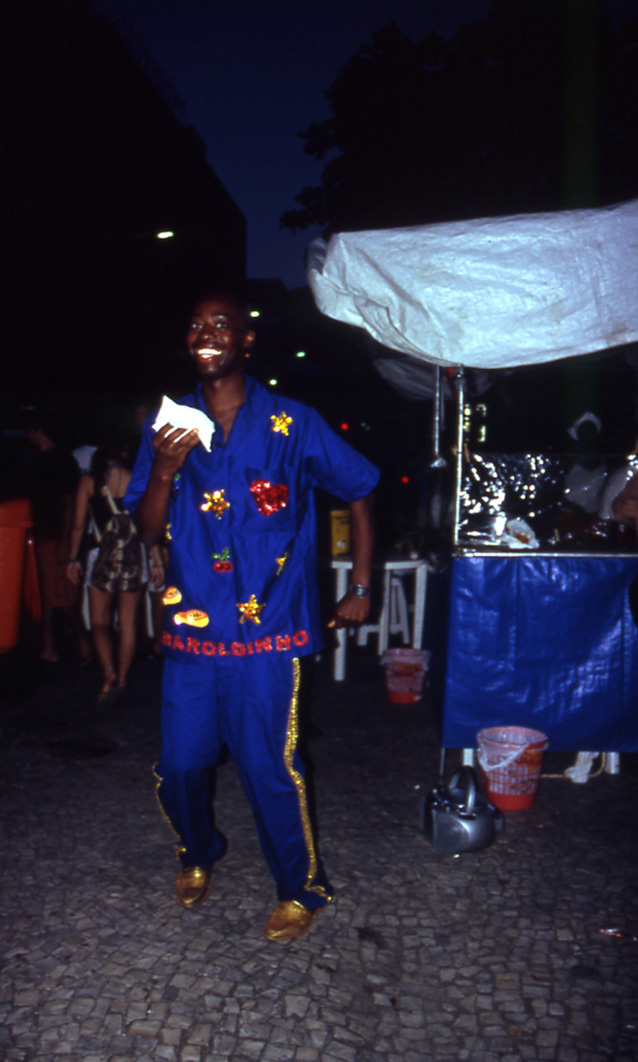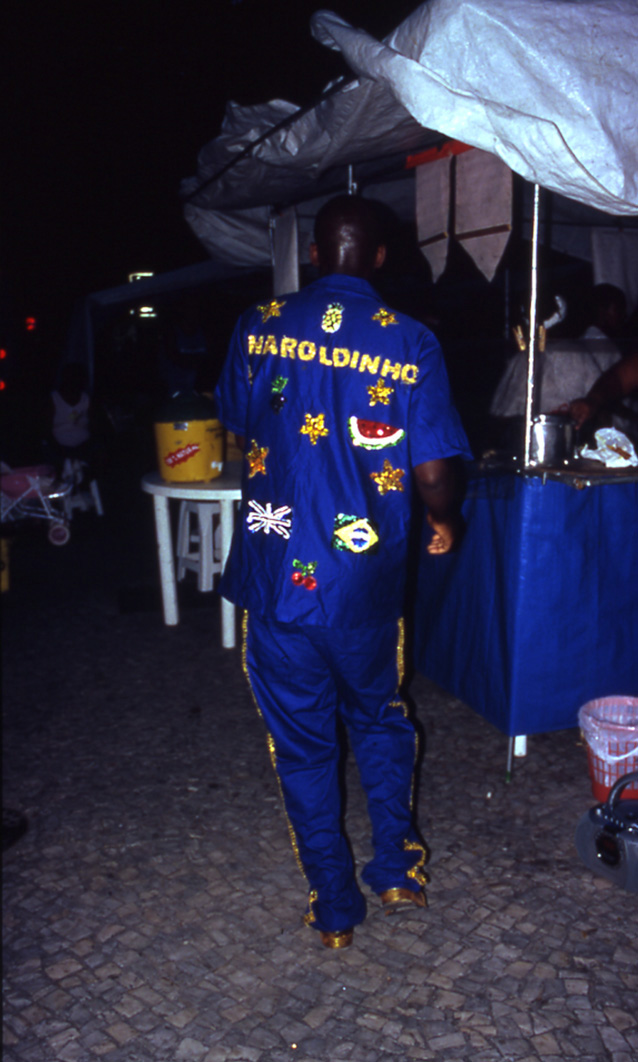Haroldinho
2003 Gasworks, London, UK
Video 12 mins
Haroldinho, “Little Harold”, is a persona created and performed by Harold Offeh in response to his experiences of Rio de Janeiro, during a two-month residency in the city. Dressed in a blue utilitarian uniform decorated with sequins and glitter, Haroldinho dances the samba in the city’s famous tourists spots, Ipanema Beach, the statue of Christ, and Maracana Stadium. Shaped in response to the conflicting character of the city, Haroldinho is an embodiment of the vibrancy and energy Brazilian culture, but also reflects Brazil’s status as a newly developing nation that is dependent upon a low-waged, low-skilled labour force. The blue uniform Haroldinho wears is commonly worn by manual laborers, the home-sewn decorations an unconvincing replica of the professional carnival costume. Bringing two sections of Brazilian life that are not usually seen together Offeh appears to recognize that while the razzle-dazzle of Brazilian carnival is the outward sign of Brazilian culture it is the unseen workers who sustain national life.
Soliciting and activating the spectators’ preconceived notions of Brazil, through his use of dance, samba music and the site specificity of his performances, Offeh acts to question the validity of these things as national signifiers. Offeh encourages us to reconsider national stereotypes, and to question the ways in which we fabricate and perpetuate our own histories. The issue of cultural commodification, in which national cultures and identities are packaged and exported apparently unproblematically, is a central component of the work. The cultivated persona, Haroldinho, is clearly a dancing novice, whose enthusiasm is greater than his proficiency. While “Little Harold” is conversant, he is not yet fluent in Brazilian culture, raising the problems of cultural translatability, but hinting at cross-cultural similarities.
Through his use of performance Harold Offeh is both the author and the object of the work. Haroldinho, the persona, the ‘live’ performance, the filmic documentation and the re-enactment in the gallery space. As such, Haroldinho becomes a layered and open-ended engagement with national signifiers, constructed identities and cultural diversity.
This project was supported by Gasworks/Triangle Arts Trust, Arts Council England and the British Council
Gimpel Fils Gallery, London.


